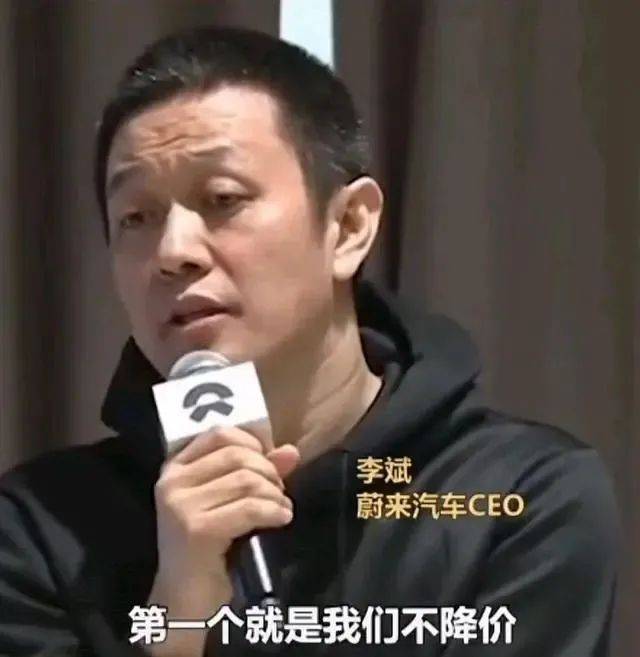It is well-known that Tesla has initiated a new round of significant price cuts at the beginning of the year, and many domestic new energy vehicle companies have followed suit. However, for NIO, price cuts do not seem to be an easy option, as Li Bin once boasted that NIO would not lower prices.
But facing Tesla’s aggressive stance, is it to lose face and cut prices to maintain sales, or to maintain face and let sales decline? This is NIO’s dilemma, and NIO’s solution is to build more battery swapping stations.
Some people say, what’s the connection between price cuts and building battery swapping stations? Let’s first take a look at the relevant data regarding NIO’s battery swapping:
According to Shen Fei, Senior Vice President of NIO Energy, if each car swaps a battery once per week on average, and each swap costs 50 kWh at a price of RMB 0.6 per kilowatt-hour, then a battery swapping station needs to cover about 350 cars to achieve the break-even point for its operation. Based on NIO’s existing 1,300 battery swapping stations, it should sell 455,000 cars to keep the battery swapping stations running. However, according to the official NIO’s car sales data (from July 2018 to January 2023), the total sales volume is only 301,301 units, and based on NIO’s past sales volume, it will take another year to reach 450,000 units.
In other words, considering the break-even point, NIO should not build any more battery swapping stations in 2023.
In addition, according to official statistics, the average daily battery swapping volume for all NIO stations across the country is 30,000 times. Because there is no accurate data available, I can only roughly estimate that the average swapping volume per day per station is 23 times by dividing the daily swapping volume of 30,000 times by the existing 1,300 battery swapping stations. That is to say, on average, there are only 0.95 cars per hour going to swap batteries at each station. Some friends may think that these 1,300 swapping stations include high-speed swapping stations, which have lower usage frequency in normal times, resulting in larger estimation errors. However, according to the information I found, only 205 of NIO’s existing 1,300 battery swapping stations are located on high-speed roads (data from NIO’s official Charging Power App). If we calculate based on 1,095 stations excluding high-speed swapping stations, the demand for swapping per station is only 27 times per day, much lower than the battery swapping capacity designed for first and second-generation stations. In my personal experience of swapping batteries in the Shenzhen area, except for some specific busy stations in a few areas, most stations can be swapped immediately.
In other words, NIO’s existing battery swapping stations can already meet the current demand from vehicles.
Then, why did NIO announce to add 1,000 more battery swapping stations? I think this is where NIO’s intelligence lies.The direct impact of price reduction on car manufacturers is a decrease in profits. Of course, if the situation is good, the decreased profits can be offset by the increased sales resulting from the price reduction, and that’s what Tesla thinks. However, not every car company is Tesla, and some, like XPeng, don’t benefit from price reductions. As for NIO, if the rumors are true that they are reducing the price of each car by 100,000 RMB, and based on the current monthly sales of over 10,000 units, NIO’s monthly cash flow will decrease by 1 billion RMB, and their annual revenue will decrease by 12 billion RMB. Of course, after the price reduction, NIO’s sales will definitely rise, and they will attract more customers as their prices become competitive within the mainstream price range of 300,000 RMB, but it is difficult to determine exactly how many customers they will attract, and price reductions can also cause a rebound from existing owners. It is known that a large part of NIO’s sales come from referrals from existing owners.
When we consider the potential losses from the price reduction, let’s do a cost analysis by looking at the cost of building 1,000 new swap stations as planned by NIO. Based on NIO’s existing first- and second-generation swap stations costing 3 million RMB and 1.5 million RMB per unit, respectively, it is reasonable to calculate the cost of the third-generation swap station to be around 1 to 1.5 million RMB. Therefore, NIO’s claim to build 1,000 new stations requires an investment of 10 to 15 billion RMB, which is equivalent to a 10,000 to 15,000 RMB price reduction per car, based on the expected annual sales volume of 23 years.
Running a business is not charity, nor playing house. Any major decision must be based on the overall interests of a company, determined through multiple rounds of calculations. NIO’s intention to build 1,000 new swap stations is the best choice they made after weighing the risks of price reduction. However, whether these 1,000 stations can be successfully built is another story.
This article is a translation by ChatGPT of a Chinese report from 42HOW. If you have any questions about it, please email bd@42how.com.
